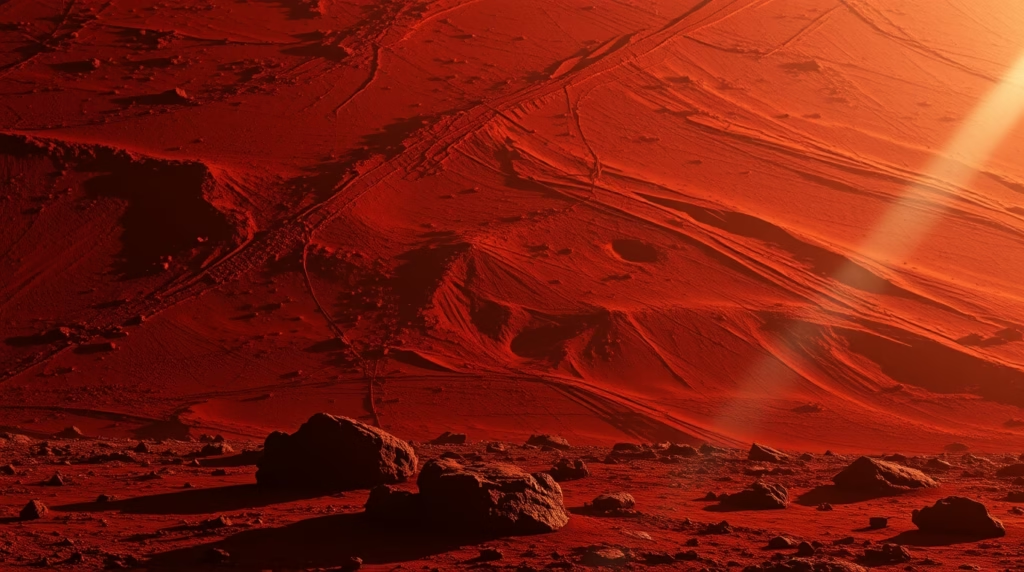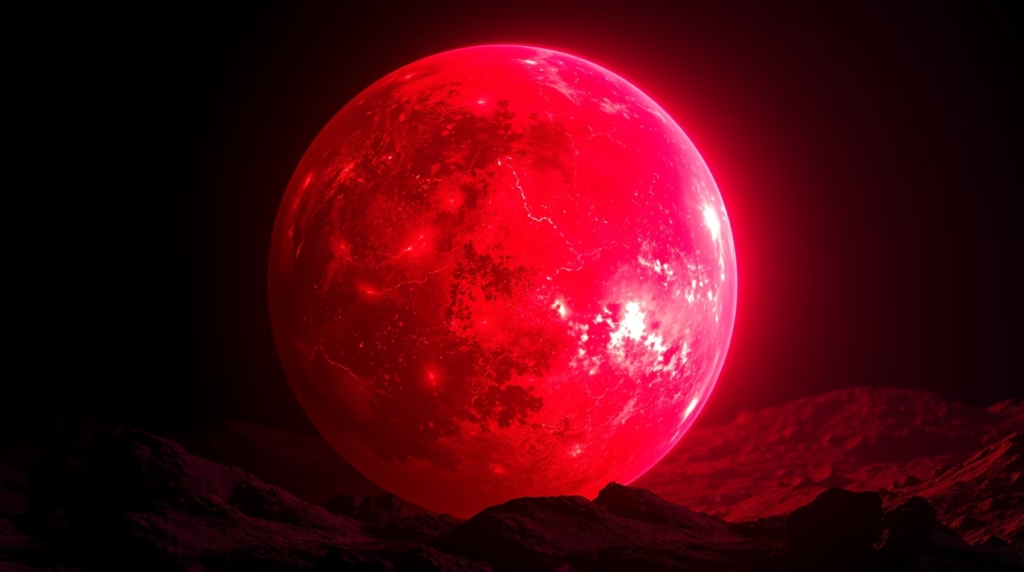Why Mars is Red: A Story of Water and a Rusty Planet
Imagine Mars, our neighboring planet, glowing a vibrant red in the night sky. For centuries, people have wondered why it has this distinctive color. Now, scientists, with the help of NASA and international partners, have made a significant discovery that sheds light on this mystery and tells us a fascinating story about Mars’ past.
The big news is that a new study suggests a specific mineral, called ferrihydrite, is likely the main reason Mars looks so red.1 This mineral is a type of iron oxide, which is essentially rust. But it’s not just any rust; ferrihydrite forms under specific conditions, particularly in the presence of cool, liquid water. This discovery is crucial because it gives us a peek into Mars’ ancient history, suggesting it once had a much wetter and potentially more habitable environment.
Mars: From Wet to Dry
Today, Mars is a cold, dry, and barren world.2 Its atmosphere is thin, making it impossible for liquid water to exist on its surface for long.3 But scientists have found plenty of evidence that Mars wasn’t always like this. We’ve seen features that look like dried-up riverbeds, ancient lake basins, and minerals that can only form when water is present.4 These findings paint a picture of a Mars that was once much warmer and wetter, a place where life might have had a chance to thrive.
The discovery of ferrihydrite as the key to Mars’ red color adds another piece to this puzzle. Ferrihydrite forms in cool water, which means Mars might have had a period when liquid water existed at lower temperatures than previously thought.5 This is exciting because it suggests that Mars could have sustained liquid water, a vital ingredient for life, for a longer period than we initially believed.
The Role of Ferrihydrite
So, what exactly is ferrihydrite? It’s a mineral made of iron, oxygen, and hydrogen.6 It’s a type of iron oxide, which is what gives rust its reddish-brown color. But unlike other iron oxides, ferrihydrite forms in cool water. The scientists believe that this mineral is widespread on Mars, covering the planet in a thin layer of dust.7 This dust, carried by Martian winds, is what gives Mars its iconic red appearance.
The researchers didn’t just guess that ferrihydrite was the culprit. They analyzed data from multiple Mars missions.8 They used instruments on orbiters, like NASA’s Mars Reconnaissance Orbiter and ESA’s Mars Express and Trace Gas Orbiter, to study the composition of Mars’ surface from space.9 They also used data from rovers like Curiosity, Sojourner, and Opportunity, which have explored the Martian surface and taken detailed measurements of the rocks and soil.10
To confirm their findings, the scientists also conducted experiments in the lab. They created simulated Martian dust, including ferrihydrite, and studied how light interacts with it under Martian conditions.11 This allowed them to compare their lab results with the data from the Mars missions, providing strong evidence that ferrihydrite is indeed responsible for Mars’ red color.
A Glimpse into Red Mars’ Past
This discovery is more than just an explanation for Mars’ color. It’s a window into the planet’s past. By understanding how ferrihydrite forms, scientists can learn more about the conditions that existed on Mars billions of years ago. They can learn about the temperature, the presence of water, and the chemical processes that shaped the planet.
One of the most exciting aspects of this discovery is its implications for the possibility of life on Mars. If Mars once had a wetter and more habitable environment, it’s possible that life could have existed there. The scientists are now trying to understand the conditions that were present when ferrihydrite formed, to see if they were conducive to life.
International Collaboration and Future Missions
This study is a testament to the power of international collaboration. Scientists from NASA and the European Space Agency (ESA) worked together to analyze data from multiple missions and conduct laboratory experiments.12 This collaboration highlights the importance of working together to explore the mysteries of our solar system.
The researchers are also looking forward to the return of samples from Mars, which are currently being collected by NASA’s Perseverance rover.13 These samples will provide a wealth of information about Mars’ composition and history, allowing scientists to confirm their findings and learn even more about the planet.

The Importance of Studying Mars
Studying Mars is crucial for understanding our own planet and the potential for life beyond Earth.14 By learning about Mars’ past, we can gain insights into the processes that shape planetary environments and the conditions that are necessary for life to arise.
The search for life on Mars is one of the most exciting and challenging endeavors in space exploration. Every discovery, like the one about ferrihydrite, brings us one step closer to answering the fundamental question: Are we alone in the universe?
What’s Next?
The scientists are eager to continue their research and learn more about Mars’ history. They plan to analyze more data from Mars missions and conduct further laboratory experiments. They are also eagerly awaiting the return of samples from the Perseverance rover, which will provide invaluable insights into Mars’ composition and history.
This discovery is a reminder that there is still so much we don’t know about Mars. But with each new mission and each new discovery, we are gaining a deeper understanding of our neighboring planet and its potential for harboring life.
The collaborative effort, the dedication to scientific method, and the drive to understand the universe are all components that lead to advancements like this. It is a testament to the human spirit and our endless curiosity. This study is not just a scientific finding; it’s a story of exploration, discovery, and the ongoing quest to understand our place in the vast cosmos. Each piece of information gathered from Mars helps to paint a clearer picture of our own planet and the possibility of life beyond Earth.
read interesting searches || click NOW
